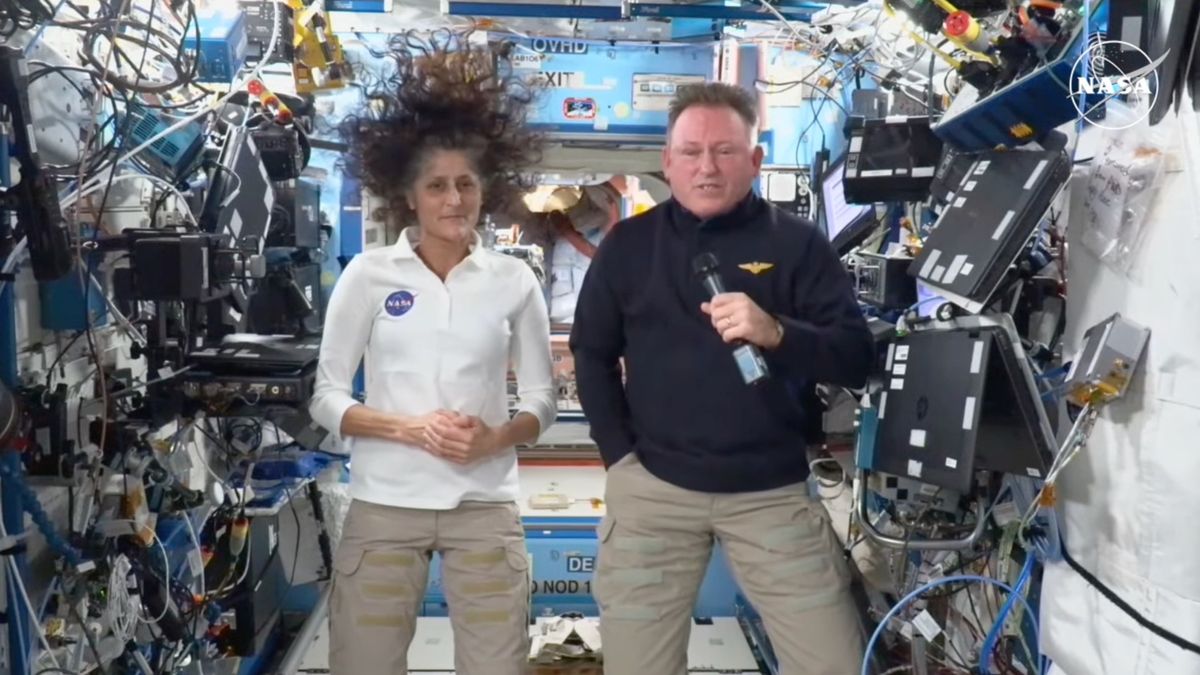
The astronauts aboard Boeing’s Starliner are nearing the conclusion of their extended stay in Earth orbit, and they want to address the ongoing “stranded astronauts” narrative.
Nasa’s Suni Williams and Butch Wilmore embarked on a journey to the International Space Station (ISS) last June for the inaugural crewed test flight of Boeing’s Starliner spacecraft. Initially, they anticipated their time in orbit would last roughly 10 days. However, complications arose due to thruster malfunctions during docking, prompting a thorough investigation by NASA and Boeing regarding their next steps.
Eventually, Starliner returned to Earth without its crew. Following changes to astronaut assignments, Williams and Wilmore were integrated into SpaceX‘s Crew-9 mission, which reached the ISS in late September. This adjustment meant their space mission would extend until Crew-10 arrived after Crew-9’s six-month term.
Since then, reports portraying Williams and Wilmore as “stranded” have intermittently circulated in the media. Throughout this time, the astronauts have diligently carried out their duties aboard the ISS, including Williams setting a record for the most cumulative spacewalk time by a female astronaut.
Related: NASA accelerates return timeline for Boeing Starliner astronauts by swapping spacecraft.
The attention surrounding their situation increased recently after President Donald Trump criticized the Biden administration, claiming it “virtually abandoned” the two astronauts. He also urged SpaceX CEO and close Trump associate Elon Musk to assist them.
In December, NASA revealed a delay for the launch of Crew-10, pushing it to “late March” due to additional work required on a new Dragon spacecraft. This setback meant that Williams and Wilmore’s return to Earth would be further postponed, as they would fly back with Crew-9’s astronauts, NASA’s Nick Hague and cosmonaut Aleksandr Gorbunov.
Further delays in the Crew-10 Dragon’s production have compelled NASA to substitute the mission’s spacecraft with one that can be prepared sooner. This announcement followed a social media exchange between President Trump and Musk, who echoed the misleading narrative surrounding the “stranded astronauts.” Williams and Wilmore are hopeful that the conversation around their situation will shift.
In a recent interview with CNN’s Anderson Cooper, both astronauts shared that sometimes extending missions—transitioning from a planned 10-day stay to nearly 10 months—is simply part of the job.
“We come prepared and committed. That is the essence of a human spaceflight program: to anticipate and prepare for every plausible scenario,” Wilmore explained. “We don’t feel abandoned, nor do we feel trapped.”
Wilmore also emphasized that all astronauts aboard the ISS are equipped to return to Earth immediately if an emergency arises, stating: “We would never expect a return unless it was a medical emergency or another significant issue.”
“Help us shift the narrative,” Wilmore urged Cooper. “Let’s frame it as being ‘prepared and committed.’”
Both astronauts have extensive experience in long-duration missions aboard the ISS and expressed that they are relishing their current experience in space.
“It’s incredible how, upon re-entering, it feels as though, ‘Oh my goodness! I recall this sensation of floating!’ Both of us adapted remarkably quickly,” Williams remarked during the CNN discussion.
She added that the conclusion of their mission would be bittersweet: “I suspect both of us will feel somewhat sad when that feeling of space is no longer with us.”
NASA is currently aiming for a no-earlier-than launch of the Crew-10 mission on March 12, which will utilize the Crew Dragon capsule named Endurance, rather than the new Dragon spacecraft. Typically, crew transitions on the ISS last about a week. Therefore, Wilmore anticipates that Crew-9 would likely return to Earth around March 19.









